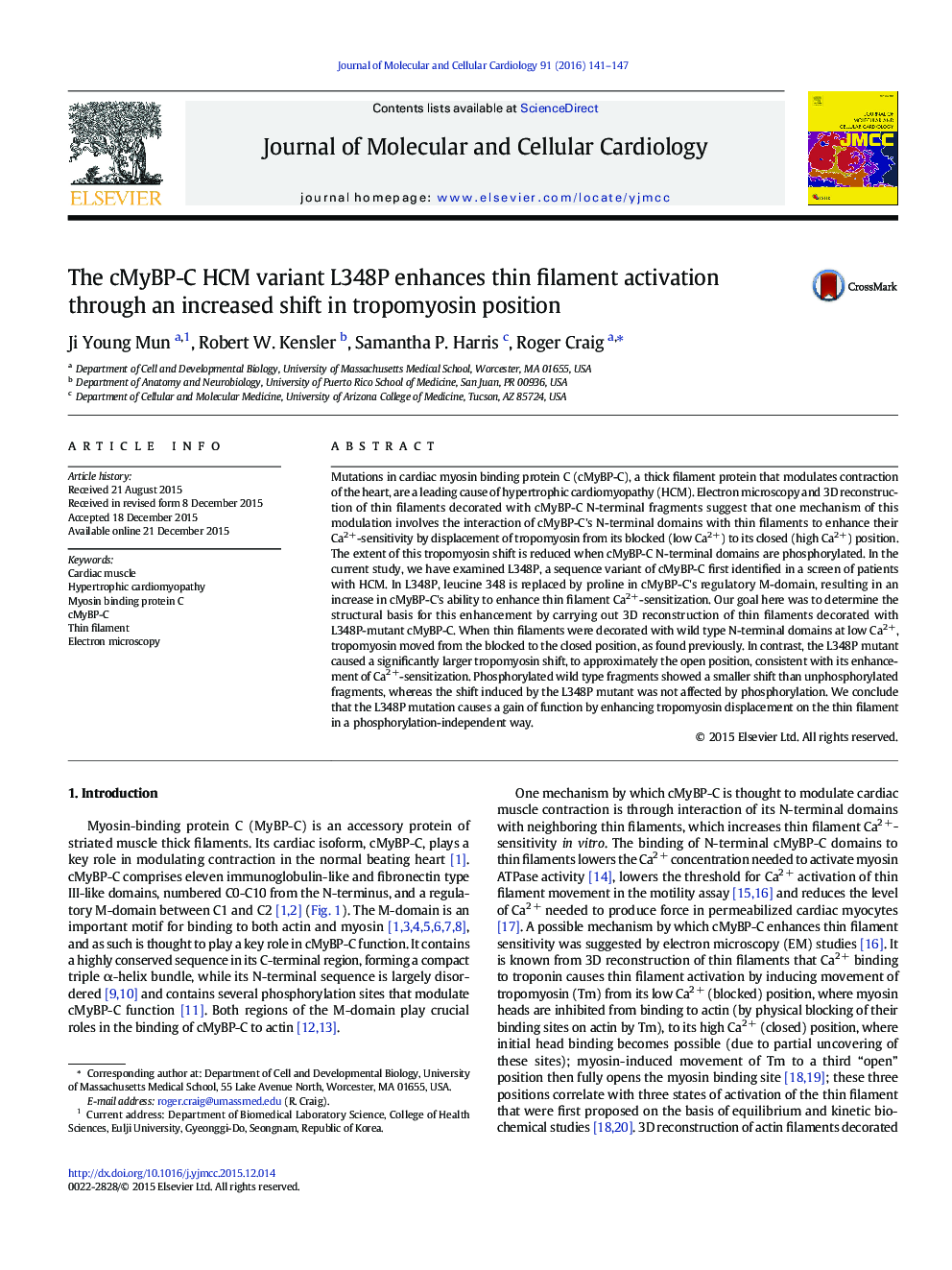| Article ID | Journal | Published Year | Pages | File Type |
|---|---|---|---|---|
| 8473963 | Journal of Molecular and Cellular Cardiology | 2016 | 7 Pages |
Abstract
Mutations in cardiac myosin binding protein C (cMyBP-C), a thick filament protein that modulates contraction of the heart, are a leading cause of hypertrophic cardiomyopathy (HCM). Electron microscopy and 3D reconstruction of thin filaments decorated with cMyBP-C N-terminal fragments suggest that one mechanism of this modulation involves the interaction of cMyBP-C's N-terminal domains with thin filaments to enhance their Ca2Â +-sensitivity by displacement of tropomyosin from its blocked (low Ca2Â +) to its closed (high Ca2Â +) position. The extent of this tropomyosin shift is reduced when cMyBP-C N-terminal domains are phosphorylated. In the current study, we have examined L348P, a sequence variant of cMyBP-C first identified in a screen of patients with HCM. In L348P, leucine 348 is replaced by proline in cMyBP-C's regulatory M-domain, resulting in an increase in cMyBP-C's ability to enhance thin filament Ca2Â +-sensitization. Our goal here was to determine the structural basis for this enhancement by carrying out 3D reconstruction of thin filaments decorated with L348P-mutant cMyBP-C. When thin filaments were decorated with wild type N-terminal domains at low Ca2Â +, tropomyosin moved from the blocked to the closed position, as found previously. In contrast, the L348P mutant caused a significantly larger tropomyosin shift, to approximately the open position, consistent with its enhancement of Ca2Â +-sensitization. Phosphorylated wild type fragments showed a smaller shift than unphosphorylated fragments, whereas the shift induced by the L348P mutant was not affected by phosphorylation. We conclude that the L348P mutation causes a gain of function by enhancing tropomyosin displacement on the thin filament in a phosphorylation-independent way.
Keywords
Related Topics
Life Sciences
Biochemistry, Genetics and Molecular Biology
Cell Biology
Authors
Ji Young Mun, Robert W. Kensler, Samantha P. Harris, Roger Craig,
